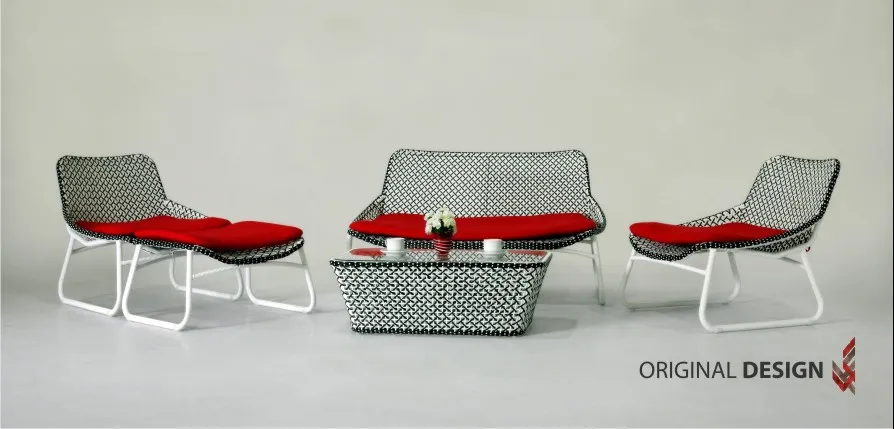Outdoor furniture has evolved from being a simple set of chairs and tables placed in a backyard to a critical element of modern living. In today’s lifestyle, patios, gardens, balconies, and terraces have become natural extensions of our homes. Whether you own a sprawling countryside garden, a modest urban balcony, or a luxurious rooftop terrace, the way you furnish your outdoor space reflects your personality, taste, and approach to comfort. As more people embrace the joy of spending time outside—whether it’s for family dinners, weekend barbecues, or solitary moments of relaxation—the demand for well-crafted outdoor furniture continues to grow worldwide.
The choice of outdoor furniture is no longer about mere functionality. It involves balancing style, durability, sustainability, and comfort. Modern buyers consider materials that can withstand harsh weather, designs that blend with their home’s architecture, and eco-friendly manufacturing practices. This comprehensive guide will walk you through every aspect of selecting, styling, and maintaining outdoor furniture so that your investment brings you joy and utility for years to come.
Why Outdoor Furniture Has Become a Lifestyle Essential
Over the past decade, there has been a notable shift in how people perceive their outdoor spaces. What used to be considered secondary or “nice-to-have” areas are now seen as primary living spaces—especially after global lifestyle changes that encouraged people to spend more time at home. Outdoor furniture plays a pivotal role in this transformation. A well-designed outdoor space equipped with the right furniture can function as a dining area, a relaxation zone, a workspace, or even a social hub for family and friends.
Global interior and exterior design trends show a rising appreciation for “outdoor living rooms,” where comfort and design standards match or even exceed indoor spaces. This shift is not limited to luxury homes; even apartments with small balconies are being transformed into cozy retreats with compact outdoor furniture. The result is a growing demand for stylish, durable, and weather-resistant options that cater to different climates and lifestyles. For homeowners, investing in outdoor furniture is no longer optional—it’s part of creating a complete home experience.
Defining the Purpose of Your Outdoor Space Before Buying Furniture
Before making any purchase, it’s essential to understand exactly what role your outdoor space will play in your daily life. A terrace designed for dining will require different furniture compared to a garden meant for lounging. For example, if your goal is to host weekend dinners, you might need a sturdy outdoor dining table with seating for multiple guests, accompanied by chairs with comfortable cushions. On the other hand, if relaxation is your top priority, you may lean toward a combination of chaise lounges, hammocks, or even a daybed surrounded by greenery.
An outdoor space can also serve multiple functions, which makes furniture selection more strategic. Imagine a small urban balcony that serves as a morning coffee corner during weekdays and a mini entertainment zone on weekends. In such a case, modular or foldable outdoor furniture can offer the flexibility you need. Understanding your primary and secondary objectives will help you make better decisions, ensuring that each piece you purchase contributes to both the functionality and aesthetic of your outdoor area.
Choosing Outdoor Furniture Materials for Durability and Style
One of the most important factors in selecting outdoor furniture is material choice. Since outdoor furniture is constantly exposed to elements like sun, rain, humidity, and wind, durability is key. Different materials offer distinct advantages and visual appeal.
Teak wood remains one of the most popular options due to its exceptional natural resistance to water, insects, and rot. Its natural oils act as a built-in weatherproofing, allowing teak outdoor furniture to last for decades with minimal maintenance. Over time, teak develops a beautiful silver-gray patina, though it can also be maintained in its golden hue with regular oiling.
Rattan and wicker, whether natural or synthetic, bring a warm, textured aesthetic perfect for tropical and bohemian themes. Natural rattan offers organic beauty, while synthetic rattan—often made from polyethylene—is better suited for regions with heavy rain or strong UV exposure. Metal options, including aluminum and wrought iron, cater to different tastes: aluminum is lightweight, rust-resistant, and modern, while wrought iron provides timeless elegance and sturdiness.
Resin and high-quality plastics have advanced significantly, offering designs that mimic wood or wicker while being incredibly easy to maintain. These are ideal for budget-conscious buyers who still want attractive, durable outdoor furniture. Fabric selection for cushions and upholstery is equally important—choose textiles that are water-resistant, UV-protected, and mildew-resistant to ensure comfort and longevity.
How Weather and Climate Affect Outdoor Furniture Choices
The climate in your area should heavily influence your outdoor furniture selection. For regions with high rainfall, it’s essential to choose quick-drying fabrics and frames that resist rust and corrosion. Teak, eucalyptus, and acacia are hardwoods well-suited for wet environments, while powder-coated aluminum and stainless steel offer excellent rust resistance.
In sunny, hot climates, UV resistance is a priority to prevent fading and material degradation. Light-colored fabrics can help keep seating cool, and breathable materials like mesh can enhance comfort. Coastal areas pose unique challenges due to salt in the air, which accelerates corrosion. For these conditions, synthetic rattan, marine-grade stainless steel, and aluminum with protective coatings are excellent choices.
Even wind conditions should be considered. Lightweight furniture may be easily displaced in windy regions, making heavier materials like wrought iron a safer choice. Additionally, consider whether the furniture has design features such as drainage holes or elevated slats to prevent water accumulation, which can damage both the frame and the cushions.
Outdoor Furniture Styles That Enhance Your Home’s Character
Outdoor furniture should not exist in isolation—it needs to harmonize with the architectural style and interior design of your home. For modern and minimalist homes, clean lines and neutral tones in aluminum or teak frames create a seamless extension of the indoor space. Cushions in soft grays, whites, or muted earth tones complement contemporary aesthetics.
Coastal and bohemian styles often lean toward wicker, bamboo, and macrame accents, paired with breezy fabrics in shades of blue, white, and sandy beige. Rustic homes benefit from solid wood furniture with visible grain patterns and warm, earthy tones. For those seeking a more luxurious outdoor experience, high-end designs with plush cushions, custom upholstery, and integrated lighting can transform a simple patio into a resort-like escape.
Color choice plays a significant role in setting the mood. Neutral palettes create a timeless backdrop and allow for seasonal changes in accessories, while bold colors add personality and energy. Mixing textures—such as pairing smooth metal frames with soft, woven fabrics—can also add depth and sophistication to the space.
Planning Your Outdoor Layout for Comfort and Functionality
Just as with indoor design, the arrangement of outdoor furniture affects both aesthetics and usability. Zoning your outdoor space into specific areas—such as dining, lounging, or gardening—creates a sense of order and purpose. For instance, a rectangular dining table naturally defines a dining zone, while a cluster of lounge chairs around a fire pit encourages social interaction.
The flow of movement is equally important. Ensure there’s enough space between pieces for people to move comfortably, and avoid overcrowding any single area. In large gardens or terraces, combine different scales of furniture to create balance. For smaller spaces, opt for foldable or modular designs that can be rearranged to accommodate different activities.
Flooring and ground surfaces also influence the layout. Wooden decking provides warmth and visual continuity, while stone tiles add sophistication. Outdoor rugs can help define specific zones while adding texture and color.
Enhancing Outdoor Furniture with Decoration and Accessories
While outdoor furniture forms the foundation of your space, accessories bring it to life. Decorative elements like throw pillows, outdoor rugs, and lanterns can instantly change the atmosphere. Plants, whether in large ceramic pots or woven planters, add natural beauty and freshness. For small spaces, vertical gardens or wall-mounted planters can maximize greenery without taking up valuable floor space.
Lighting is another transformative element. String lights create a romantic ambiance, solar-powered lanterns offer eco-friendly illumination, and LED floor lamps extend the usability of your outdoor furniture well into the evening. Shade solutions such as umbrellas, pergolas, or retractable awnings not only enhance comfort but also protect furniture from prolonged sun exposure.
Sustainable and Eco-Friendly Outdoor Furniture Choices
Sustainability has become a defining trend in the outdoor furniture market. Many consumers now look for pieces made from FSC-certified wood, recycled metals, or fabrics derived from post-consumer plastic bottles. Bamboo, a fast-growing renewable material, is increasingly used in furniture production. Upcycling old furniture into new creations is another way to reduce environmental impact while adding unique character to your space.
Choosing long-lasting materials over cheap, disposable options is one of the most effective ways to practice sustainability. Well-cared-for outdoor furniture can last for decades, reducing the need for frequent replacements and minimizing waste.
Maintenance and Care for Long-Lasting Outdoor Furniture
Even the most durable outdoor furniture requires some level of care to maintain its appearance and function. Teak and other hardwoods benefit from periodic cleaning and oiling, though some owners prefer to let them weather naturally to a silver-gray finish. Wrought iron may need occasional repainting to prevent rust, while aluminum should be cleaned with mild soap and water to remove dirt and prevent oxidation.
Cushions and fabrics should be washed according to manufacturer instructions, and removable covers can make maintenance easier. During prolonged periods of rain or in the off-season, store cushions indoors and cover furniture to protect it from moisture and UV damage.
Where to Buy Outdoor Furniture and How to Get the Best Deals
The choice between buying online or from local retailers depends on several factors, including budget, customization needs, and delivery logistics. Online platforms offer vast selections and competitive pricing, often with customer reviews to guide your choice. However, local stores and artisan workshops allow you to inspect materials firsthand, test comfort levels, and discuss customization directly with the makers.
For those seeking truly unique pieces, working with specialized outdoor furniture manufacturers ensures quality craftsmanship and tailored designs. Supporting local artisans can also reduce your carbon footprint and strengthen your community’s economy.
Budgeting for Outdoor Furniture Without Sacrificing Quality
Investing in outdoor furniture can range from modest to substantial, depending on materials, brand, and design complexity. Start by prioritizing essential pieces, such as a dining set or lounge chairs, before adding decorative elements. Modular designs offer flexibility and can be expanded over time, spreading out the cost.
To maximize value, watch for end-of-season sales or clearance events, when retailers offer discounts to make room for new collections. Signing up for manufacturer newsletters can give you early access to promotions.
Outdoor Furniture Trends in 2025 and Beyond
Looking ahead, outdoor furniture trends are moving toward multifunctionality, sustainability, and integrated technology. Modular designs that can be rearranged for different occasions are gaining popularity, as are pieces made from recycled or responsibly sourced materials. Neutral color palettes remain timeless, but there’s also a growing interest in earthy tones and bold accents.
Smart outdoor furniture with built-in charging ports, LED lighting, or adjustable temperature settings is also emerging, blending convenience with comfort. These innovations reflect a broader movement toward making outdoor spaces as functional and inviting as indoor rooms.
Tips to Create an Outdoor Space You’ll Love
Ultimately, the best outdoor furniture is the one that fits your lifestyle, climate, and personal taste. Take time to plan your layout, choose materials wisely, and invest in quality pieces that will stand the test of time. Remember that accessories, plants, and lighting can transform even the simplest setup into a welcoming retreat. With thoughtful planning and care, your outdoor space can become a cherished part of your daily life—a place where style meets comfort, and where every moment spent outside feels like a small escape.

